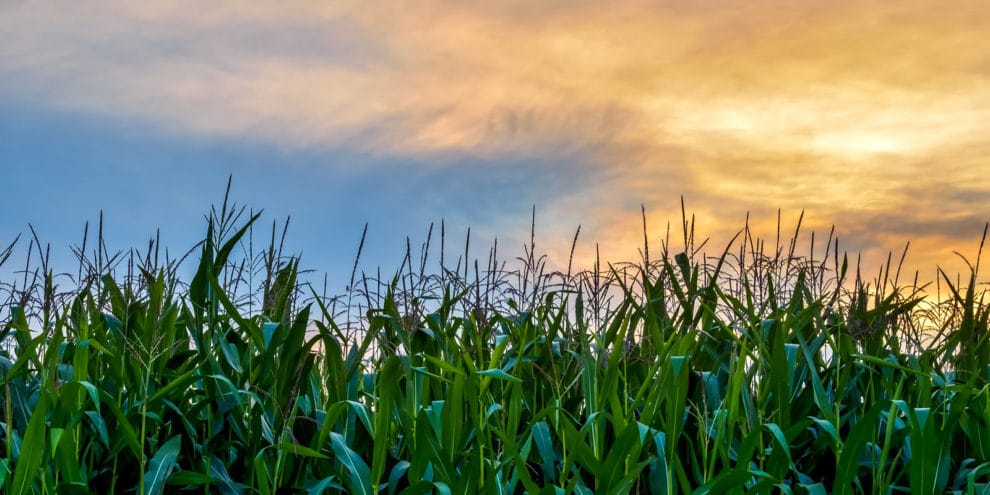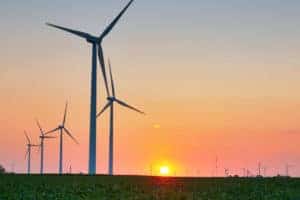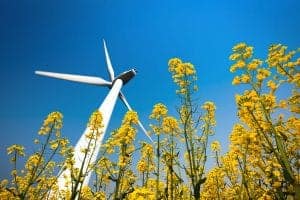Domestic energy production is one of the predominant issues facing our nation. People feel the pain in their wallet every time they pump gas or open their power bills. Recently it has been reported that the United States could have more oil reserves than Saudi Arabia. Americans are also exploring many new ways of producing energy. The common denominator in all of these forms of energy production is land.
The state of the art of energy production still requires the use of land. Someday it may be possible to generate energy in one location and “beam” it to a distant spot using some undeveloped technology. But at present a fuel must be mined or produced in one location, transported, processed, distributed, and consumed. Each of those steps often happens at different locations. These processes mean that many landowners (private, public, and government-owned) will have the opportunity to participate in some stage of the energy life-cycle. This article details information about energy production as it relates to energy and land-use. My aim is to inform landowners and maybe spark those with an interest to find a way to participate in the process of energy production. The data and information presented in this article is taken mostly from government and industry-provided websites.
Traditional Fuels for Energy
Coal- The top 5 coal-producing states comprise over 72% of the coal mined in the U.S. Tens of thousands of landowners are involved in some way with these mining operations. In Alabama, more than 1/3 of the counties are coal-producing. It is well understood in those parts of Alabama that mineral rights were likely leased or purchased a century ago, and that it is unlikely that they are conveyed in the sale of property. Buyers need to know that going into a purchase.
Natural Gas / Methane- Natural gas production is one of the most promising energy opportunities happening today. Improvements in hydraulic fracturing (fracking) practices have opened untold reserves of methane. Infrastructure is being developed to power and fuel vehicles on compressed natural gas (CNG). T. Boone Pickens is one of the biggest proponents of this technology, and honestly in certain circumstances it makes good sense. Landowners will have new opportunities to negotiate 5 and 10 year gas leases and interact with companies exploring sites that were previously “untouchable”.
Oil- Improved fracking methods have also opened oil reserves in shale formations and other areas that were previously unreachable. There is a new boom happening in North Dakota as a result. Towns and cottage industries are popping up just like in California in the 1840’s to support this wave of miners. Those who own lands in areas around these sites are able to rent houses or mobile trailer parks for exorbitant amounts. Numerous opportunities will continue to abound as these technologies continue to open new sites.
New Renewables and Land-Use
Corn Ethanol- Corn farmers have enjoyed the increase in prices over the past decade from government-mandated ethanol in gasoline. One bushel of corn can produce approximately 2.75 gallons of ethanol. An acre of productive farmland can produce roughly 439 gallons of ethanol. Using corn to produce fuels has driven the price so high that cattle, fish, and poultry producers can scarcely afford to feed it to their livestock. Midwestern farmers are certainly reaping the benefits of the government mandates, and it appears the price will continue to remain high for the foreseeable future.
Biodiesel from Soybeans- Soybean oil can be processed and used as a feedstock for biodiesel. One bushel of soybeans translates into about 1.5 gallons of biodiesel. Good bean-producing land can grow enough soybeans to make about 57 gallons of fuel. This is a relatively small amount of biodiesel generated from intensively farming one acre.
Algae and biofuels- Research is being done in growing and processing algae to produce biofuels. The algae being studied is grown in ponds with high salinity. Currently it is believed that one acre of pond-grown algae can produce enough fuel for 10 automobiles.
Wood-based Cellulosic Ethanol– Extensive research has been done in the conversion of wood and wood-waste into ethanol. Several pathways have been tried, but two seem to be at the forefront: fermentation and gasification. Both of these methods have been proven in bench tests, but to date the commercial production of fuels from wood has been slow to take off. When these technologies eventually make commercial production a reality, this will likely boost stumpage prices to landowners. Economic models show that a production facility can afford to import wood only within a 75 mile radius. This means that opportunities for competition are possible and that forest landowners will be the beneficiaries of the development of this industry.
Grass to energy- Switchgrass, Miscanthus, Arundo and other grasses have seen increasing research for their potential to be used for energy creation. Alabama Power conducted trials co-firing bales of switchgrass with coal to produce electricity. I have been contacted by potential investors looking to piece together 20,000 to 40,000 acres to grow grasses for energy production. At present I couldn’t identify such a large area in west Alabama available for grass production, but it does present an interesting possibility for reclaiming some of the prairie soils in the Black Belt.
Wind energy- Some areas of the country have near-constant winds that have been harnessed by wind turbines for electricity production. A medium-sized turbine, capable of producing 1.5 megawatts of electricity, takes up approximately 1.5 acres. A wind turbine of that size can generate enough electricity to power approximately 500 homes. One industry site recommended 6 wind turbines per 640 acres of land. They are spaced out so as not to interfere with the wind each of the others receives.
There are numerous other renewables currently being utilized such as: hydroelectric plants, landfill methane, anaerobic digesters from dairy and food processors, and solar cells. No matter what the type of fuel or how it is produced, land is required in order for something useful to be made available to the marketplace.
The growing number of emerging technologies means more ways landowners can profit from the property they own. The point of this article is to encourage people to assess what opportunities are available in your area. Do you have salt water wells for growing algae? Do you have a near-constant wind flow through your land? Is your property capable of growing switchgrass? Landowners are no longer confined to having oil, methane, or coal in order to profit from the energy sector. Emerging technologies means an explosion of new opportunities for landowners. A little research may mean new pathways to prosperity through your property.
This content may not be used or reproduced in any manner whatsoever, in part or in whole, without written permission of LANDTHINK. Use of this content without permission is a violation of federal copyright law. The articles, posts, comments, opinions and information provided by LANDTHINK are for informational and research purposes only and DOES NOT substitute or coincide with the advice of an attorney, accountant, real estate broker or any other licensed real estate professional. LANDTHINK strongly advises visitors and readers to seek their own professional guidance and advice related to buying, investing in or selling real estate.










Add Comment